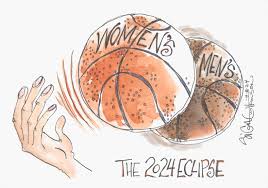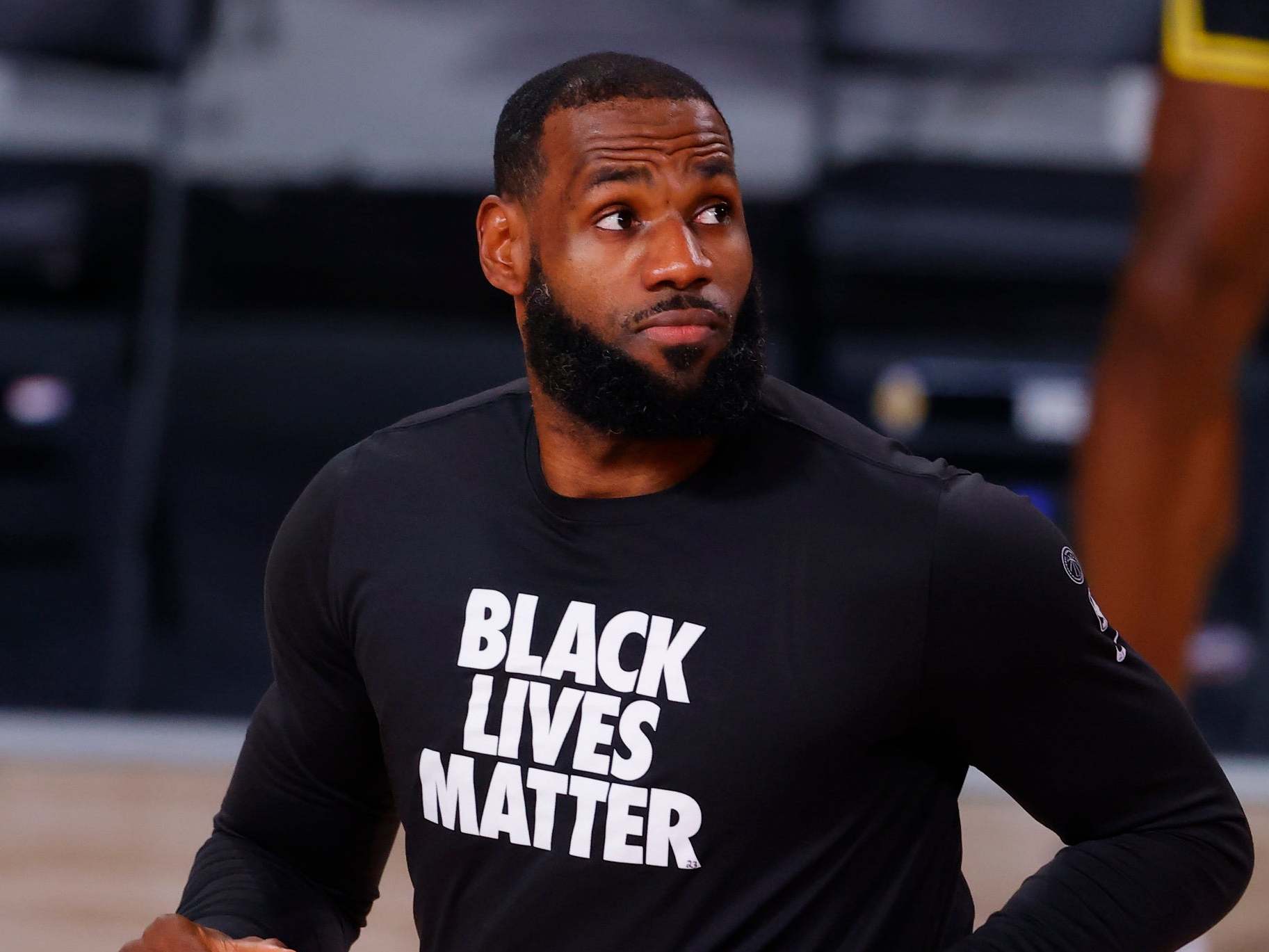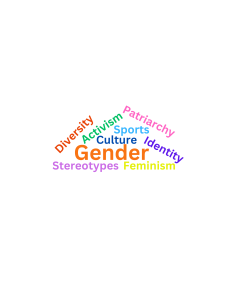1 Chapter One: Sports Feminism
Section One: The Fundamentals
A) What do we know about sport? What are common assumptions we make about sport and society?
|
Sports Speak a Universal Language: As great as it would be for the statement that sports speak a universal language to be true, it is not always the case. There are several different unjust factors that prevent individuals across the world from being united by sports. Particular ethnicities, cultures, genders, and backgrounds experience discrimination in different sports across the world. Stereotypes about these different demographics are what lead to discrimination. For example, females are labeled as weaker, less competitive, less skilled, and uninterested in sports as opposed to males. This has led to disparities in media coverage, pay, and equal opportunities. As for racial discrimination, hockey is an example of a sport that has historically been predominantly white played by white athletes and has created stereotypes that people of color do not belong in the game. There have been many instances of racist comments and gestures targeted at Black hockey players that have no part in the game. Lastly, there are the economic factors as some families and individuals are unable to afford to play particular sports. For example, hockey is also one of the most expensive sports to afford, as equipment and playing for a team cost a substantial amount of money. As much as an individual might want to play a sport, they are unable to because of expenses. Overall, sports do not speak a universal language because not all individuals are included. Many different factors make certain demographics uninterested, uncomfortable, and unable to play sports. Hopefully, needed changes will be made so that all demographics are more accepted in any sport. |
Exercise 3: Notebook prompt
What are some other metanarratives about sport that you are familiar with? Find an image or video clip or draw something yourself that captures this idea…
So what? Why does any of this matter? Does it matter? As something we grow up with – live with – play through – we don’t often interrogate the meanings of sport, and perhaps we don’t want to.
But being aware of these assumptions and metanarratives is especially important, I would argue, because of the centrality of sport to our everyday lives, the role that sport plays in shaping our childhood and worldviews and….. [finish that thought]
| Sports is a Bussiness:
The metanarrative that sports is a business highlights the meaning that sports are much more than a game. Instead, there is a major emphasis on the economic aspect of sports such as player salaries, sponsorships, merchandising, contract agreements, and media rights. Every professional league commissioner and team owner shares the main goal of creating as much dollar value as possible. In my cases, winning and competing are not the main goals instead creating as much revenue as possible is. Athletes work for team ownership and play sports to earn their income instead of for entertainment purposes. Their lifestyle and income rely on their athletic performances which further pushes the narrative that sports is a business. Many sports teams and players tend to make decisions based on what is best for their organization and themselves. For example, a player might enjoy playing for the Toronto Maple Leafs but instead sign with the Florida Panthers in free agency because they have no state income tax. This is a business decision that the athlete made to help himself and his family economically. Many people think that professional athletes and sports teams make decisions based on their enjoyment of playing the game but this is far from the truth. Athletes and sports teams tend to make decisions for business purposes based on money. I would argue that because of the centrality of sport in our everyday lives, the role that sport plays in shaping our childhood, worldviews, and decisions is impacted by income.
|
B) What is social justice?
Exercise 4: Padlet Prompt
Think back to the last section and try to look at some of the ideas we discussed differently. How might sport and social justice actually co-exist?
Record any images, video clips, or gifs you added to the padlet and identify a point of intersection between sport and social justice (can be an issue or a barrier or a debate or something you would like to explore in more depth in this course) . Screenshot or paste in your response below.
| Advocacy & Activism
There are many great examples of advocacy and activism in sports. One of the first examples that immediately comes to my mind is the support that Lebron James showed towards the Black Lives Matter Movement in 2020. As a result of the murder of African-American man, George Floyd by a Minneapolis police officer, protests and social movements nationwide took place. The Black Lives Matter Movement was formed to campaign against systemic racism and violence against Black people. Lebron James used his platform and influence to advocate for police reform, racial justice, and equality for African Americans. Some of his most notable actions are attending Black Lives Matter protests, using social media and interviews to raise awareness about the issues, donating to several significant foundations, and taking in stand at the NBA bubble. Once the NBA resumed play in 2020, during the COVID-19 pandemic players played in an enclosed environment called the “bubble”. In the bubble, Lebron held a meeting with all players and staff to use their platforms to show support towards the Black Lives Matter movement and stand up against systemic racism in America. NBA players league-wide wore shirts with powerful messages and kneeled during the national anthem to protest against racial inequality. Overall, Lebron James is a great example of an athlete who advocated for needed change in society. It was also the first time that an athlete with the pedigree of Lebron, who is arguably the best basketball player of all time, used their platform for this. It demonstrates his leadership and courage to stand up for social justice. He is a great role model for millions of people worldwide.
|
C) Social Justice Reading
(note: this activity is optional!)
D) KINESIOLOGY AND SOCIAL JUSTICE
Exercise 5:
Exercise 6:
What are the implications of bodies-at-risk discourse and the refusal to understand the health gap from a social justice perspective, according to the authors of this article?
| In the article “Social Justice in Kinesiology, Health, and Disability,” the authors highlighted the implications of bodies-at-risk discourse and the refusal to understand the health gap from a social justice perspective in several critical ways. Each of these implications stems from the body’s appearance, disability, and health in ways that do not recognize the social and structural factors contributing to health disparities.
The bodies-at-risk discourse problem was driven by neoliberalism and focuses on the fact that particular bodies, such as those that are marginalized, have a disability, or illness are at risk of health problems. The major issue with this discourse is that it tends to label these body types without regarding the economic, social, and environmental determinants that impact them. By stating that these particular body types are at risk of health issues, several negative issues arise such as racial discrimination, increased likelihood of poverty, and unequal access to healthcare. The refusal to understand the health gap from a social justice perspective creates several social inequalities within society. It completely disregards the policies and social structures that are the main factor of why the issue is happening in the first place. Overall the refusal to understand the health gap from a social justice standpoint makes it difficult to enact systemic change that could ensure the health and safety of marginalized groups. |
Section Two: Sport Feminism
Exercise 7: Notebook Prompt
What is feminism? What does it mean to you? Choose one of the images below and explain how it captures your understanding of feminism (or find one that does speak to you and paste this into your pressbook with an explanation of why it matters to you.
| Feminism is defined as the belief, theoretical perspective, and social movement that all genders should have equal rights and opportunities in society. Personally, as a male, I have not had too much thought about feminism. I believe that all genders, sexes, cultures, ethnicities, abilities, etc should experience the same rights and opportunities within society. Nobody in the world should hold more value or power than others solely based on their appearance.
The image that stuck out to me was the bald male wearing the shirt that states “THIS IS WHAT A FEMINIST LOOKS LIKE”. From my past knowledge, typically feminists that I had seen or met were females, but this photo reminds me that men can be feminists as well. Not only does it remind me of that message, but it also encourages me to be more of an activist of my beliefs. As a male, I think that it is important to recognize that anyone can be a feminist and that change is needed in society. The more people and groups that support and advocate for everyone in society to have equal rights and opportunities, the higher the likelihood that change will be made. Once more males view other males advocating for women’s rights then they will be more comfortable to take part as well. Overall, after viewing this image and taking a deeper dive into the meaning of feminism, my general knowledge and awareness of the meaning have changed for the better. |
Exercise 8: Notes Prompt (optional)
NB: Cornell notes is a great resource that teaches effective notetaking. Unfortunately, our system can’t save notes taken in the H5P app, so this is fully optional.
Exercise 9: Crossword Activity
Exercise 10: Padlet Prompt
|
I created this word cloud from many of the key terms that were frequently listed throughout the article. Each of the words stuck out to me and is connected in some form. For example, sports is connected to stereotypes because there are many stereotypes as to which social groups are suited for particular sports. From there on stereotypes are connected to gender because many of those stereotypes made about social groups involve an individual’s gender. From there on, there are countless connections with the terms.
|

|
I believe that the landscape of women’s sports is completely changing, rather than only a temporary trend. The media has done a fantastic job at advertising the Catlin Clark and Angel Reese rivalry, dating back to when they were each in college. Clark went to the University of Iowa and Reese went to LSU, and they each played each other in the semi-finals on the largest stage in back-to-back years. Reporters asked each player questions to stir the pot about one another before each game which led to highly-anticipated matchups and better television ratings. Once the two got drafted into the WNBA, the rivalry continued into their rookie seasons and views began to increase. Overall, the landscape around women’s basketball is not a temporary trend, as for the last three years it has received a lot of publicity and I can imagine that this will only continue to increase. Around the same period, the popularity surrounding women’s hockey began to increase as the PWHL was created. The PWHL is a professional women’s hockey league, that is similar to the NHL, as athletes represent their cities and compete for the championship. Thousands of fans attend the games and tune in online to watch the event take place. There is no doubt that in recent years, women’s sports have begun to generate more enthusiasm. Even in the recent Summer Olympics, athletes such as Simone Biles and Summer Mcintosh have gathered many viewers and publicity for their respective sports. My favorite football team is the Chicago Bears and there is a player on the team, Jonathan Owens. He is married to Simone Biles, but yet most people only know of him because of his wife. This is something that would be uncommon decades ago, as male athletes were always more popular than female athletes. It is great to see that the narrative is beginning to change. |




